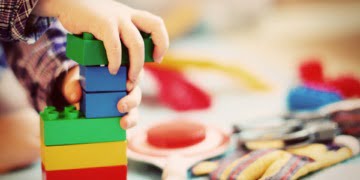Few things excite parents more than watching their newborn achieve a milestone. One of the earliest—and sometimes most surprising—is rolling over.
It sparks the question: How early can a newborn baby turn from belly (tummy) to back?
Some babies may flip over unintentionally in the first couple of months, while others take their time.
Understanding the normal timeline helps you know what to expect, how to encourage your baby, and when to talk to a doctor.
When Do Babies Start Rolling?
Most babies begin rolling from belly to back between 3–5 months. Rolling from back to tummy usually comes a little later, around 5–7 months.
According to the American Academy of Pediatrics (AAP), rolling is one of the key movement milestones in the first year of life. It shows growing muscle strength, coordination, and motor development.
Accidental flips can occur earlier (sometimes as soon as 2 months), but true rolling takes practice, control, and strength.
Why Belly-to-Back Comes First
Rolling from tummy to back tends to come first for a few reasons:
Gravity helps: When babies push up on their arms during tummy time, their weight can naturally shift and tip them over.
Easier coordination: Rolling backward requires less core strength than pushing over from the back to tummy.
Neck and shoulder strength develops first: As babies gain head control, this contributes to rolling ability.
Early Rolling Before 2 Months
If your baby rolls consistently before 2–3 months, it’s usually not intentional. Instead, it may be caused by reflexes or sudden body movements. This is harmless in most cases.
However, if you notice very stiff movements, unusual postures, or no progress in other milestones, bring it up with your pediatrician. Early communication ensures your baby’s development is on track.
How to Support Your Baby’s Rolling
The Importance of Tummy Time
Tummy time is the single most effective activity to help your baby develop rolling skills. It strengthens the neck, shoulders, and back muscles.
Tips for tummy time success:
- Start early: Place your baby on your chest or lap from the newborn stage.
- Increase gradually: Work up to 20–30 minutes daily by 7 weeks of age.
- Make it fun: Use toys, mirrors, and your voice to keep your baby engaged.
Encourage Rolling Through Play
- Place toys just out of reach to inspire reaching and shifting weight.
- Gently guide their hips or shoulders during side-to-side rocking.
- Practice rolling during diaper changes as a playful activity.
Safety Tips When Rolling Begins
Back to sleep always: Babies should always be placed on their backs to sleep, even once they begin rolling. Once they can roll independently, let them find their own sleep position.
Stop swaddling: Discontinue swaddling as soon as your baby shows signs of rolling (around 4 months).
Avoid elevated surfaces: Never leave your baby unattended on beds, couches, or changing tables.
Safe sleep environment: Keep the crib free from pillows, blankets, and toys to reduce suffocation risk.
Rolling Timeline at a Glance
| Baby’s Age | Typical Rolling Ability | Notes |
|---|---|---|
| 0–3 months | Accidental rolls may occur | Reflex-driven, not intentional. |
| 3–4 months | Purposeful rolling may begin | Often tummy-to-back first. |
| 4–5.5 months | Most babies roll tummy-to-back | Supported by tummy time. |
| 5–7 months | Rolling back-to-tummy begins | More strength required. |
| By ~7 months | Confident rolling both ways | A key developmental milestone. |
| No rolling by 6–7 months | Check with a pediatrician | Could indicate delay. |
When to Consult a Pediatrician
The CDC’s Developmental Milestones tracker highlights rolling as a milestone usually achieved by 6 months.
Consult your pediatrician if your baby:
- Has not rolled by 6–7 months.
- Shows stiffness or floppy muscle tone.
- Isn’t attempting to lift their head or push up during tummy time.
- Misses multiple developmental milestones.
FAQs
Q1: Can a newborn really roll over at 2 weeks old?
It’s very unlikely. If a baby flips this early, it’s usually accidental due to reflexes or gravity. Intentional rolling doesn’t typically happen until at least 3 months.
Q2: Which comes first—rolling belly to back or back to belly?
Most babies roll belly to back first, usually around 3–5 months. Back-to-belly rolling generally follows between 5–7 months.
Q3: Should I worry if my 5-month-old hasn’t rolled yet?
Not necessarily. Some babies take longer, especially if they’re focusing on other milestones like sitting. If by 6–7 months your baby still isn’t rolling, check with your pediatrician.
Q4: Does tummy time really help rolling?
Yes. Tummy time strengthens the muscles needed for rolling, sitting, and eventually crawling.
Conclusion
So, how early can a newborn baby turn from belly to back? While accidental flips may occur as early as 2 months, most babies intentionally roll belly to back between 3–5 months, and back to tummy between 5–7 months.
With tummy time, encouragement, and a safe environment, your baby will reach this milestone in their own time. If rolling hasn’t occurred by 6–7 months, talk with your pediatrician to rule out developmental delays.
Celebrate each attempt, cheer your little one on, and enjoy these exciting moments—they’re the first steps toward independence!




























